An enterprise data strategy gives you a structured plan for managing, integrating, and using data across your organization. This strategy lets you break down barriers between departments, improve consistency, and protect your information. When you implement a robust enterprise data strategy, you see results quickly. You launch products faster, lower IT overhead, and avoid compliance penalties. You also open doors to new revenue streams and see measurable improvements, such as a 15% increase in revenue and a 10% reduction in operational costs.
| Measurable Outcome | Impact Description |
|---|---|
| Faster Product Launches | Insights are easier to trust, leading to quicker time-to-market. |
| Lowered IT Overhead | Consolidation of redundant systems reduces costs for IT management. |
| Savings from Compliance | Millions saved by avoiding penalties with better data management. |
| New Revenue Streams | Opportunities from AI and machine learning arise from high-quality data. |
Why Every Organization Needs an Enterprise Data Strategy

Addressing Data Silos and Fragmentation
You often face challenges when your data lives in separate systems or departments. This fragmentation makes it hard to access and use information across your enterprise. When you rely on a mix of legacy systems and modern SaaS applications, your technology landscape becomes fragmented. Departments may create their own solutions, leading to decentralized data storage and accessibility issues. Teams sometimes treat their data as proprietary, which causes turf wars and a lack of collaboration.
Here is a table that highlights the most common challenges caused by data silos and fragmentation:
| Challenge Type | Description |
|---|---|
| Fragmented technology landscapes | You use a mix of SaaS and legacy systems that do not integrate, trapping data and complicating access. |
| Technical debt | Legacy systems limit flexibility and make it hard to consolidate or share data, especially when upgrades are costly. |
| Organizational structure and growth | Rapid growth leads to decentralized management, making integration difficult during mergers or expansions. |
| Security, privacy, and compliance | Regulatory needs may force internal silos, which hinder collaboration and accessibility. |
| Lack of unified data strategy | Without a clear data strategy, teams develop their own repositories, making it hard to unify standards and definitions. |
| Cultural resistance to change | Teams may see their data as proprietary, causing reluctance to share and contributing to silos. |
Data silos create a fragmented landscape that complicates collaboration between departments. You may find it difficult to get a full view of your operations. For example, if HR and finance data remain isolated from sales data, your sales leaders cannot evaluate productivity using all relevant financial factors. This lack of integration slows down your decision-making and reduces operational efficiency.
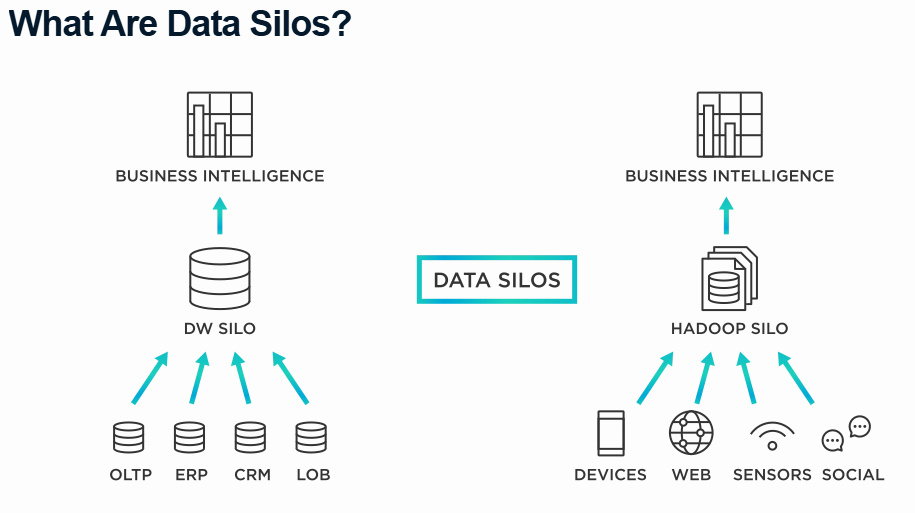
Overcoming Inconsistent Data Management
Inconsistent data management leads to a range of financial and operational problems. When you lack a unified data strategy, each department may use different standards and processes. This inconsistency results in errors, delays, and missed opportunities.
Here is a table showing the financial costs associated with inconsistent data management:
| Financial Cost Type | Description |
|---|---|
| Increased Operational Costs | Errors and delays force you to spend more, especially when manual fixes are needed. |
| Lost Revenue | Poor data quality can cause you to miss sales opportunities due to bad decisions. |
| Regulatory Fines | Non-compliance with standards can lead to heavy fines under regulations like GDPR or HIPAA. |
| Decreased Productivity | Employees waste time searching for accurate data, lowering efficiency and output. |
| Increased Risk of Data Breaches | Gaps in governance can lead to breaches, resulting in legal costs and reputational harm. |
To overcome these issues, you need to establish a clear and organized data management strategy. You should define your goals and categorize your data types. Implementing strong data quality controls ensures accuracy and completeness. Master data management helps you create a consistent view across your enterprise. Assigning data stewards from both business and IT teams can improve governance. When you treat data as an organizational asset, you promote data-driven decision-making and reduce ambiguity.
Reducing Security and Compliance Risks
Security and compliance risks grow when you lack a strong enterprise data strategy. Regulations like GDPR and HIPAA require you to manage data carefully. Without standardized policies, you risk fines and reputational damage.
A robust data strategy helps you meet regulatory requirements by providing:
| Key Component | Explanation |
|---|---|
| Standardized policies and processes | You set clear rules for handling data, which helps you align with regulations. |
| Improved data quality and integrity | Accurate and reliable data fulfills compliance obligations. |
| Access control and security | You enforce confidentiality, which is crucial for laws like HIPAA and GDPR. |
| Audit readiness | Detailed records make it easier to demonstrate compliance during audits. |
| Proactive risk management | Early detection of compliance issues reduces the chance of penalties. |
When you implement an enterprise data strategy, you gain better control over your data. You can respond quickly to regulatory changes and protect sensitive information. This approach reduces your risk of breaches and helps you avoid costly penalties.
Key Benefits of a Strong Enterprise Data Strategy
Empowering Leadership and Informed Decision-Making
A strong data strategy gives you the tools to make better decisions at every level. When you align your data initiatives with your business goals, you transform raw data into actionable insights. This approach helps leaders set clear priorities and measure progress. You can see the impact of your decisions in real time. A unified strategy supports stakeholder engagement and clear communication, which are essential for executive decision-making. Leaders who rely on data-driven decisions often achieve better business outcomes. Research shows that data-driven decision-making accounts for 61% of the variance in business performance. The table below highlights the connection between data analytics and business success:
| Hypothesis | Result | Significance |
|---|---|---|
| Data analytics improves decision-making | Significant effect (p-value = 0.004) | Yes |
| Data-driven decisions boost performance | Positive correlation (r = 0.78, p-value = 0.001) | Yes |
| Variance explained | 61% of business performance | Yes |
Enhancing Employee Productivity and Collaboration
A unified data strategy increases productivity and strengthens collaboration across your organization. When you break down barriers between departments, you help teams work toward common goals. Employees can access accurate data, which allows them to identify opportunities and risks quickly. This strategy encourages team cohesion and supports cross-team development. You can measure improvements in productivity using metrics such as output quantity, quality of work, efficiency, and adherence to deadlines. The table below shows key metrics for tracking employee productivity:
| Metric | Description |
|---|---|
| Output Quantity | Total work produced by an employee. |
| Quality of Work | Accuracy and attention to detail in completed tasks. |
| Efficiency | Effective use of resources to achieve results. |
| Adherence to Deadlines | Percentage of tasks finished on time. |
| Customer Satisfaction Ratings | Level of customer satisfaction with employee service or product. |
A strong strategy also promotes rapid innovation. Teams can make quick, informed decisions that improve business processes and drive growth.
Improving Customer Experience and Trust
Your data strategy plays a key role in building trust with customers. When you manage data responsibly, customers feel confident sharing their information. This trust leads to more accurate data and personalized experiences. Companies like Kmart Australia and Morgan Auto Group have improved customer engagement by consolidating data sources and enhancing transparency. When you unify your data, you create a seamless experience for your customers. They receive services that match their needs and expectations. A responsible strategy also helps you comply with regulations, which further strengthens customer trust.
Gaining a Competitive Edge
You want your organization to stand out in a crowded market. An enterprise data strategy gives you the tools to do just that. When you use data as a strategic asset, you respond faster to changes, understand your customers better, and make smarter decisions. Companies with mature enterprise data strategies often outperform their competitors in profitability, customer loyalty, and operational efficiency.
A strong enterprise data strategy helps you unlock several competitive advantages. The table below shows how organizations benefit when they invest in data:
| Competitive Advantage | Description |
|---|---|
| Informed Decision-Making | You make decisions based on data, aligning with customer expectations and market trends, reducing risks. |
| Enhanced Customer Understanding | Data analytics provides insights into customer behaviors and preferences, enabling personalized marketing and improved experiences. |
| Operational Efficiency | You identify inefficiencies and optimize processes, leading to cost savings and improved productivity. |
| Predictive Capabilities | Advanced analytics allow for predictive modeling, helping you anticipate market trends and customer needs. |
| Competitive Advantage | A robust enterprise data strategy enables you to respond faster and more effectively than competitors. |
You see these advantages in action at leading companies. Data-driven organizations are 19 times more likely to be profitable. Netflix uses analytics to tailor content to viewer preferences, which boosts audience engagement. The city of Turku in Finland improved innovation by integrating fragmented data assets. This approach allowed Turku to reuse data, reduce time to market, and create new revenue streams.
Tip: You can gain a competitive edge by using your enterprise data strategy to predict market trends and personalize customer experiences.
When you build your enterprise data strategy, you position your organization for long-term success. You improve your ability to innovate, adapt, and grow. You also increase your market share by delivering products and services that meet customer needs. As you move forward, consider how a modern data integration platform like FineDataLink can help you maximize these advantages. FineDataLink enables real-time data synchronization and advanced analytics, making your enterprise data strategy even more effective.
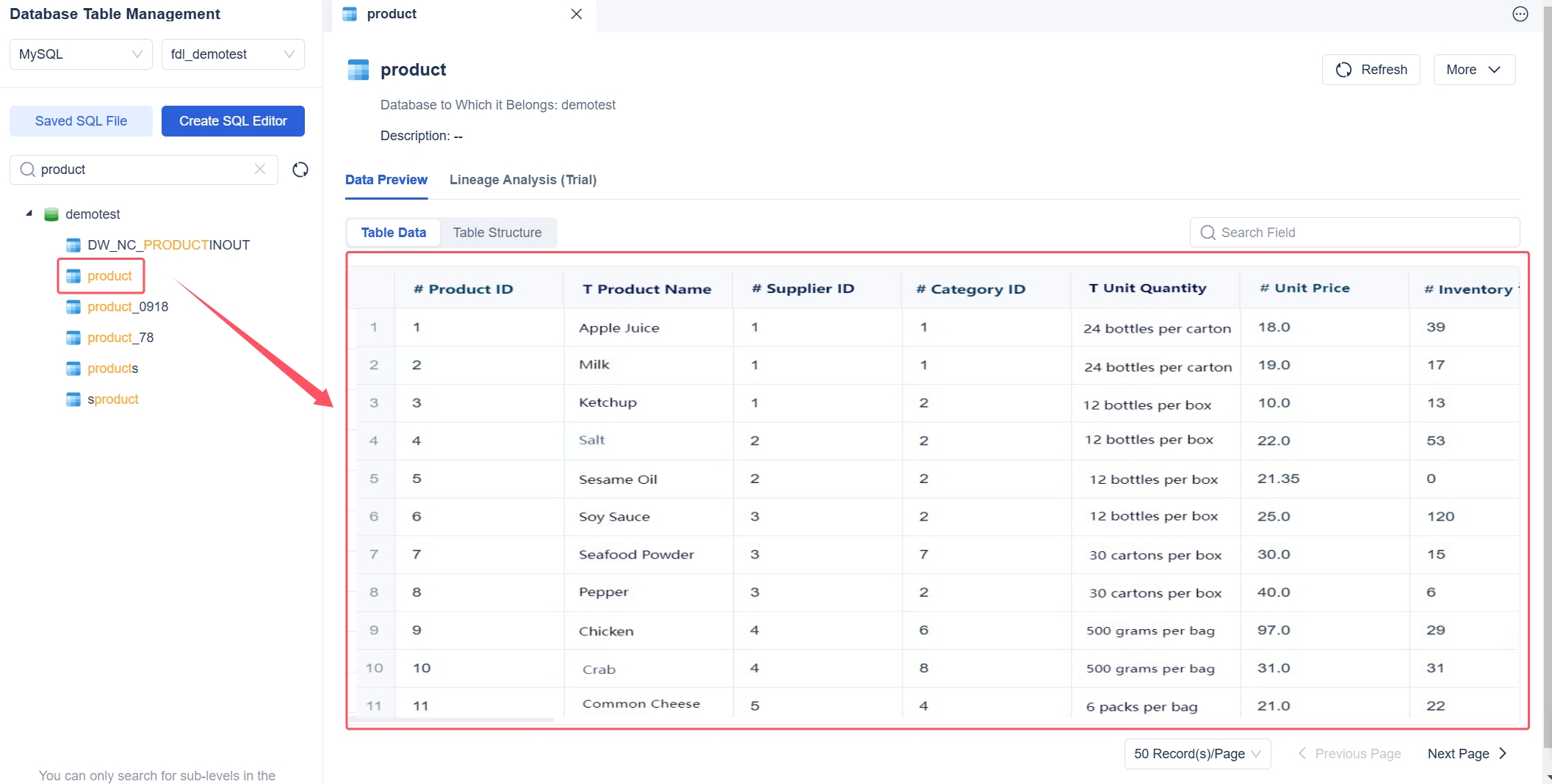
Essential Components of an Effective Enterprise Data Strategy

A successful enterprise data strategy depends on several key components. You need to build a strong foundation that supports your business goals and enables you to use data as a strategic asset. When you focus on the key components of an enterprise data strategy, you create a framework that drives growth, improves efficiency, and reduces risk.
Data Governance and Policy Framework
You must establish clear rules and responsibilities for managing your data. Data governance forms the backbone of an effective data strategy. It helps you protect sensitive information, maintain compliance, and ensure data quality across your enterprise.
A comprehensive data governance and policy framework includes these essential elements:
- Assess your current data landscape.
- Form a cross-functional team.
- Define policy goals and scope.
- Establish roles and responsibilities.
- Develop data standards and definitions.
- Address key policy areas.
- Create procedures for data handling.
- Implement data classification.
- Establish monitoring and enforcement mechanisms.
- Plan for policy review and updates.
You also need to focus on areas such as data ownership, stewardship, policies, standards, cataloging, classification, compliance, risk management, and training. When you set up these components, you create a culture of accountability and transparency.
Note: Regular audits and training help you enforce your data governance policies. You should educate your staff and monitor compliance to keep your strategy effective.
Here is a table that shows how organizations enforce data governance policies:
| Strategy | Description |
|---|---|
| Collaborative Effort | Engage multiple departments, including legal, IT, and operations, for a comprehensive approach. |
| Training and Awareness | Educate employees on their roles and responsibilities regarding data governance policies. |
| Regular Audits and Assessments | Conduct periodic audits to verify adherence and ensure data integrity. |
| Data Quality and Accuracy | Prioritize data accuracy and quality to maintain compliance and improve decision-making. |
| Documentation and Reporting | Keep a clear data governance policy document for transparency in audits and regulatory reviews. |
When you build a strong data governance framework, you lay the groundwork for a reliable and effective data strategy.
Technology, Integration, and Infrastructure
Your enterprise needs the right technology and infrastructure to support your data strategy. You must integrate data from many sources and systems to create a unified view. Enterprise data integration brings together raw data from different platforms, making it easier for you to analyze and use information.
You should use technologies such as data connectors and middleware. These tools transfer data between systems and enable communication between applications. Middleware acts as the connective tissue, ensuring seamless data flow across platforms and databases. It helps you consolidate data for comprehensive analysis and supports your business intelligence efforts.
When you evaluate and select data integration platforms, follow these steps:
- Identify core requirements by understanding your data sources and the volume of data you need to integrate.
- Assess technical capabilities and check for compatibility with your existing infrastructure.
- Ensure security and compliance by verifying encryption and access control features.
- Review vendor reputation and support.
- Calculate the total cost of ownership, including hidden expenses.
- Run a proof of concept to test the solution on a small scale.
- Plan for a phased rollout and monitor performance.
You should also look for features like role-based access control, multi-factor authentication, and audit trails. These features protect your data and help you meet regulatory requirements.
Tip: FineDataLink offers a modern solution for enterprise data integration. You can use its low-code platform to connect over 100 data sources, synchronize data in real time, and build a scalable infrastructure for your data strategy.
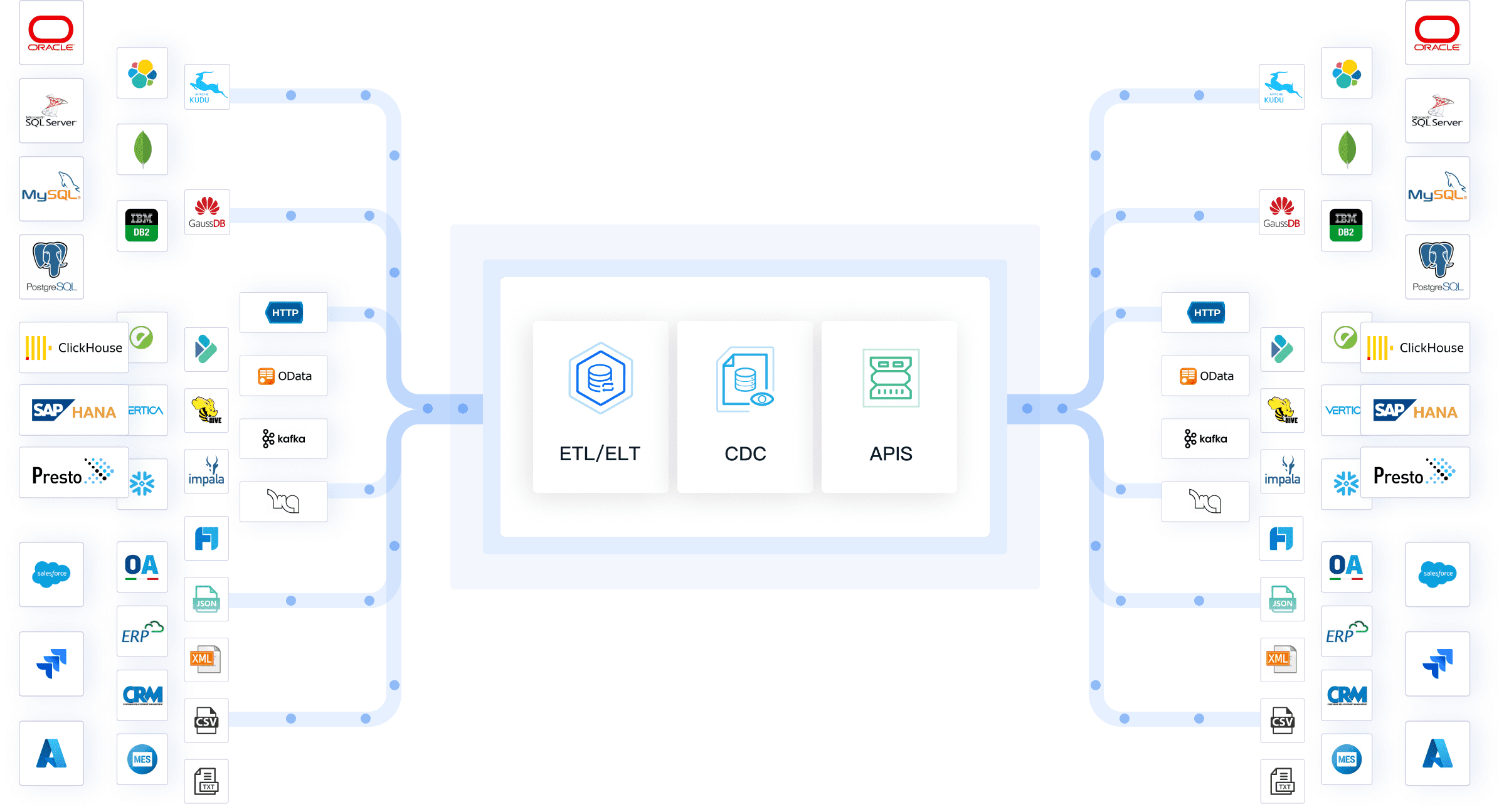
Data Quality, Consistency, and Integration
You need to maintain high standards for data quality and consistency. An effective data strategy ensures that your data is accurate, complete, and reliable. You must set benchmarks for data quality, such as accuracy, usability, consistency, completeness, and timeliness.
Here are the critical standards and processes for maintaining data quality:
- Data accuracy: Make sure your data reflects reality with minimal errors.
- Data consistency: Keep data uniform across platforms to avoid discrepancies.
- Data integrity: Maintain the completeness and reliability of your data over time.
- Data governance: Use policies and processes to keep data organized and reliable.
- Data management: Store and retrieve data efficiently.
- Data validation: Check data against predefined rules to ensure it meets standards.
- Data cleaning: Remove incorrect or duplicated data to improve quality.
You should follow these steps to measure and improve data quality:
- Develop business objectives for data quality based on your goals.
- Assess the current state of your data management.
- Cleanse existing data to correct inaccuracies and inconsistencies.
- Create a plan for continuous data quality maintenance and improvement.
When you focus on data quality and integration, you enable better data analytics and decision-making. You also reduce errors and improve the value of your enterprise data strategy.
Callout: FineDataLink helps you automate data cleaning, validation, and integration. You can use its drag-and-drop interface to streamline your data processes and maintain high data quality across your enterprise.
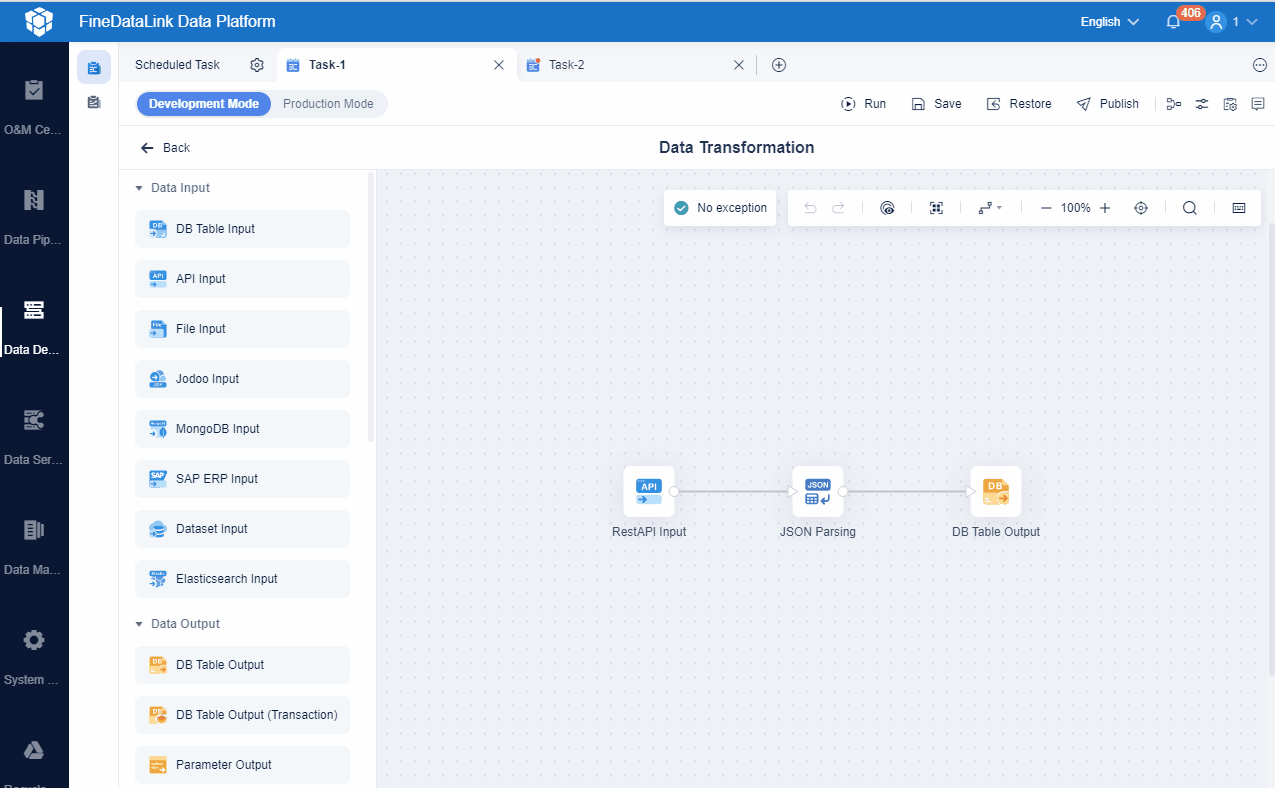
Security, Privacy, and Compliance
You must treat security, privacy, and compliance as core pillars of your enterprise data strategy. Protecting sensitive information is not just a technical challenge. It is a business necessity. You face increasing pressure from regulations such as GDPR and HIPAA. These laws require you to manage data responsibly and prove compliance at any time.
A strong enterprise data strategy helps you safeguard information and build trust with customers. You need to balance accessibility with privacy. You must allow authorized users to access data while preventing misuse or breaches. The following methods help you achieve this balance:
- Minimal data collection ensures you only gather what is necessary for your business goals.
- Encrypt data both at rest and in transit to prevent unauthorized access.
- Controlled access restricts sensitive data to authorized personnel.
- Regular audits help you identify weaknesses and improve your security posture.
- Clear consent and policy statements inform users about how you collect and use their data.
You can use a combination of frameworks and policies to manage data accessibility and privacy. The table below shows how organizations balance these needs:
| Strategy/Framework | Description |
|---|---|
| Data mapping | Create and update a map to understand what data exists and where it is stored. This supports compliance and accessibility. |
| User-friendly storage | Secure data storage must remain accessible for legitimate business purposes. |
| Custodial interviews | Interview stakeholders to identify what data exists and how it is used. This improves compliance and access. |
| Compliance roadmap policies | Review policies regularly to keep your data governance effective and adaptable. |
| Stakeholders Buy-In | Engage stakeholders to foster responsibility for data security and compliance. |
| Technology and Risk Mitigation | Use technology to enhance efficiency and manage risks, keeping data accessible but secure. |
| Hold, Retention, and Deletion | Set clear policies for retaining and deleting data to meet legal requirements. |
| Collection Analysis and Reporting | Use tools to analyze and report on data collection, supporting informed compliance decisions. |
Regulations such as the EU GDPR and New York City’s Open Data Law set clear standards for enterprise data management. GDPR Articles 6, 25, and 32 require lawful processing, privacy by design, and strong security measures. You must design your strategy to meet these requirements. You need to document your processes and train your staff to follow best practices.
Tip: Regular training and audits help you maintain compliance and respond quickly to new regulations.
FineDataLink supports your enterprise by providing secure data integration. You can use its real-time synchronization and advanced ETL features to manage sensitive information across multiple systems. FineDataLink offers role-based access control and encryption, helping you meet privacy and compliance standards. You can automate audits and monitor data flows to reduce risk and improve transparency.
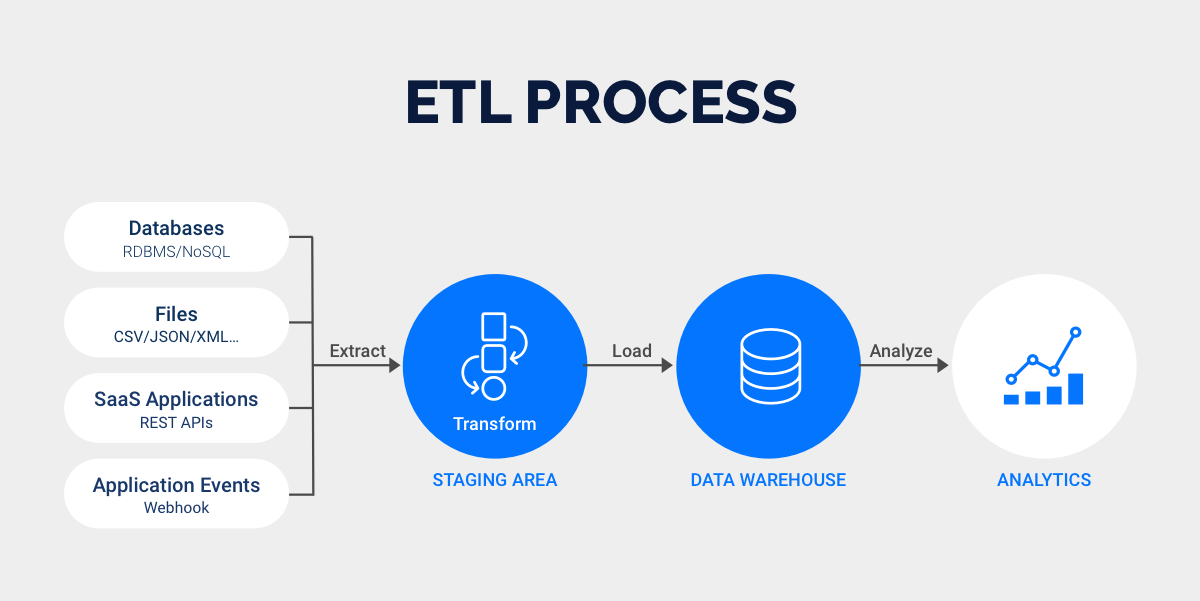
Fostering a Data-Driven Culture
Building a data-driven culture is essential for your enterprise strategy. You need to encourage every employee to use data in their daily work. This approach improves decision-making, increases efficiency, and drives innovation.
You can foster a data-driven culture by following these steps:
- Secure leadership buy-in. Leaders must set an example by using data for decisions.
- Democratize data access. Break down silos so all employees can use data.
- Invest in training and education. Regular workshops improve data literacy.
- Implement the right tools. Choose user-friendly business intelligence software.
- Promote a culture of experimentation. Encourage teams to test ideas and learn from results.
Companies like Netflix and Amazon show the power of a data-driven culture. Netflix uses data experiments to improve its recommendation engine. Amazon drives sales and innovation by testing new ideas with data insights.
The table below highlights the measurable impacts of a data-driven culture on enterprise performance:
| Measurable Impact | Description |
|---|---|
| Improved decision-making | You make better choices based on data analysis. |
| Increased efficiency and productivity | Data-driven processes streamline operations and use resources wisely. |
| Better collaboration and communication | Sharing data openly improves teamwork and information flow. |
| Enhanced innovation and competitiveness | Data insights help you innovate and stay ahead in the market. |
| KPIs for measurement | Track metrics such as the percentage of data-driven decisions and employee data literacy training. |
You should measure your progress by tracking key performance indicators. You can monitor how many decisions rely on data and how many employees complete data literacy training. These metrics show how well your enterprise strategy supports a data-driven culture.
Note: FineDataLink makes it easier to foster a data-driven culture. Its low-code platform and drag-and-drop interface empower employees to access and analyze data without technical barriers. You can integrate data from over 100 sources, supporting collaboration and innovation across your enterprise.
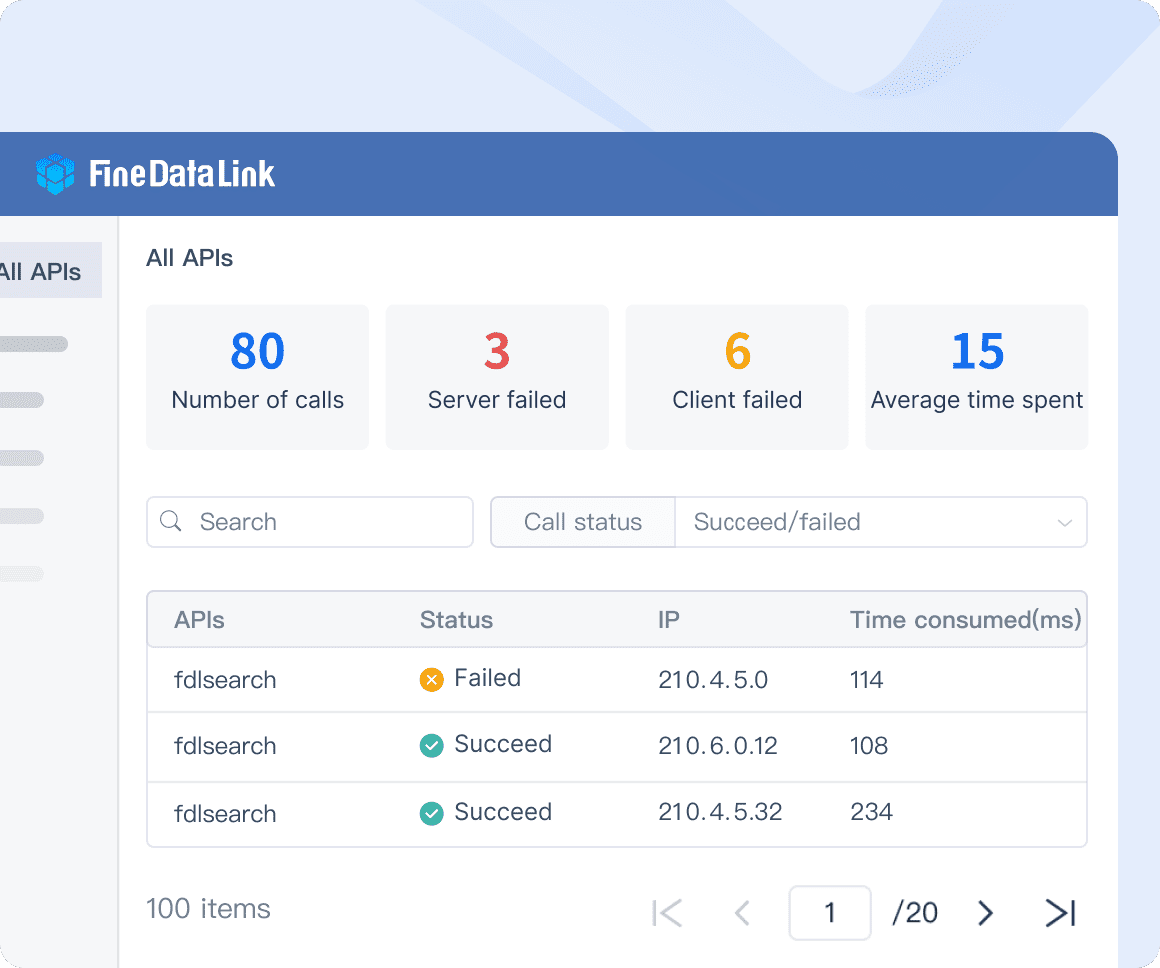
Building and Implementing an Enterprise Data Strategy with FineDataLink
Setting Clear Business Goals and Objectives
You need to start your data strategy by setting clear business goals. These goals guide your entire approach and help you measure success. When you define objectives, you align your data strategy with your company’s vision. You might want to improve customer experience, boost operational efficiency, or support innovation. Each goal shapes the way you collect, manage, and use data. A strong strategy connects business needs to data-driven actions. You should ask yourself what problems you want to solve and what outcomes you expect. This step ensures your data strategy delivers real value.
Assessing Current Data Capabilities and Gaps
You must understand your current data landscape before you build a new strategy. Assess your existing data systems, sources, and processes. Identify strengths and weaknesses in your data management. Look for gaps in data quality, integration, and accessibility. You may find that some departments use outdated systems or store data in silos. These gaps can slow down your progress and limit the impact of your data strategy. A thorough assessment helps you see where you need improvements. You can then prioritize upgrades and focus on areas that support your business goals.
Tip: Use a checklist to review your data sources, integration tools, and governance policies. This makes it easier to spot gaps and plan your next steps.
Creating a Practical Roadmap and Action Plan
You need a clear roadmap to turn your data strategy into action. Start by listing the key steps:
- Define clear goals and objectives for your data strategy.
- Conduct a comprehensive assessment of your current data capabilities.
- Establish a data governance framework to set rules and responsibilities.
- Embrace cloud solutions for flexible and scalable data management.
- Promote data literacy across your organization.
- Harness AI and machine learning technologies to unlock new insights.
- Prioritize customer data to improve experience and trust.
Each step builds on the last, creating a strong foundation for your data strategy. You should set timelines, assign responsibilities, and track progress. FineDataLink helps you implement your roadmap by simplifying data integration and management. Its low-code platform lets you connect multiple data sources, automate ETL processes, and synchronize data in real time. You can use FineDataLink to close gaps, improve data quality, and support your business objectives.
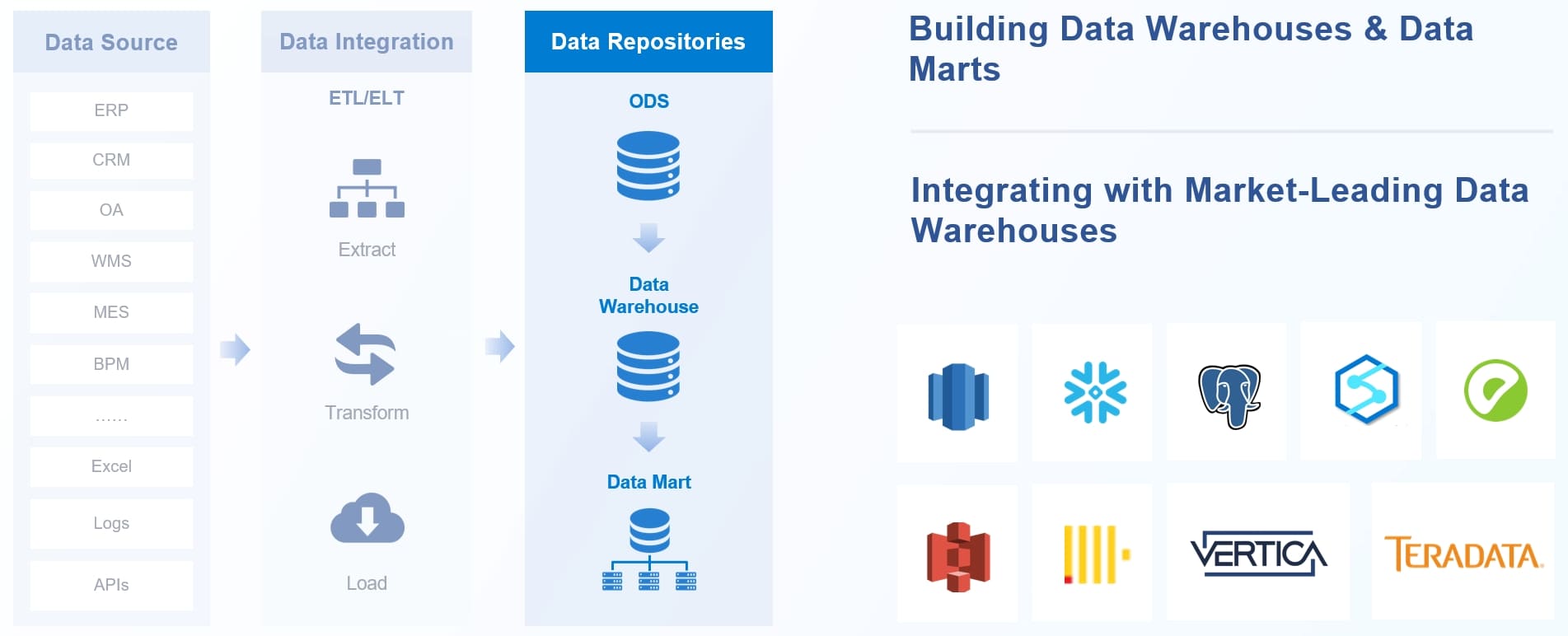
Engaging Stakeholders Across the Organization
You need to involve stakeholders from every department when you build your data strategy. Stakeholders include leaders, managers, and employees who use data in their daily work. You must communicate the purpose and benefits of your strategy. Clear communication helps everyone understand how the data strategy supports business goals.
You can use meetings, workshops, and training sessions to share your vision. Stakeholders should know how the data strategy will improve their work. You can encourage feedback and questions to make sure everyone feels included. When you listen to concerns, you build trust and support for your strategy.
A successful data strategy depends on teamwork. You should create cross-functional teams to manage data projects. These teams help you break down silos and share data across the organization. You can assign roles and responsibilities to make sure each person knows their part in the strategy.
Tip: Regular updates and progress reports keep stakeholders engaged. You can use dashboards to show how the data strategy is making a difference.
Here is a table that shows ways to engage stakeholders in your data strategy:
| Engagement Method | Benefit |
|---|---|
| Workshops | Build understanding and skills |
| Feedback sessions | Address concerns and improve strategy |
| Cross-functional teams | Share data and break down silos |
| Progress dashboards | Show results and maintain motivation |
Leveraging FineDataLink for Seamless Data Integration
You need a reliable solution to support your data strategy. FineDataLink helps you integrate data from many sources with ease. You can use its low-code platform to connect databases, cloud services, and applications. This approach makes your strategy more effective and efficient.
FineDataLink offers real-time data synchronization. You can move data between systems quickly, which supports your business needs. The platform uses drag-and-drop tools, so you do not need advanced coding skills. You can automate ETL processes and improve data quality with built-in validation features.
You can use FineDataLink to build a strong data layer for analytics and reporting. The platform supports over 100 data sources, which gives you flexibility. You can create APIs in minutes to share data between systems. This capability helps you break down silos and support your data strategy.
Note: FineDataLink provides detailed documentation and step-by-step videos. You can learn how to use the platform and get support when you need it.
Here is a list of key benefits FineDataLink brings to your data strategy:
- Real-time data integration for fast decision-making
- Low-code tools for easy setup and management
- Support for diverse data sources and formats
- Automated data quality checks and validation
- Scalable infrastructure for future growth
You can visit the FineDataLink website to request a free trial and see how it can enhance your data strategy.
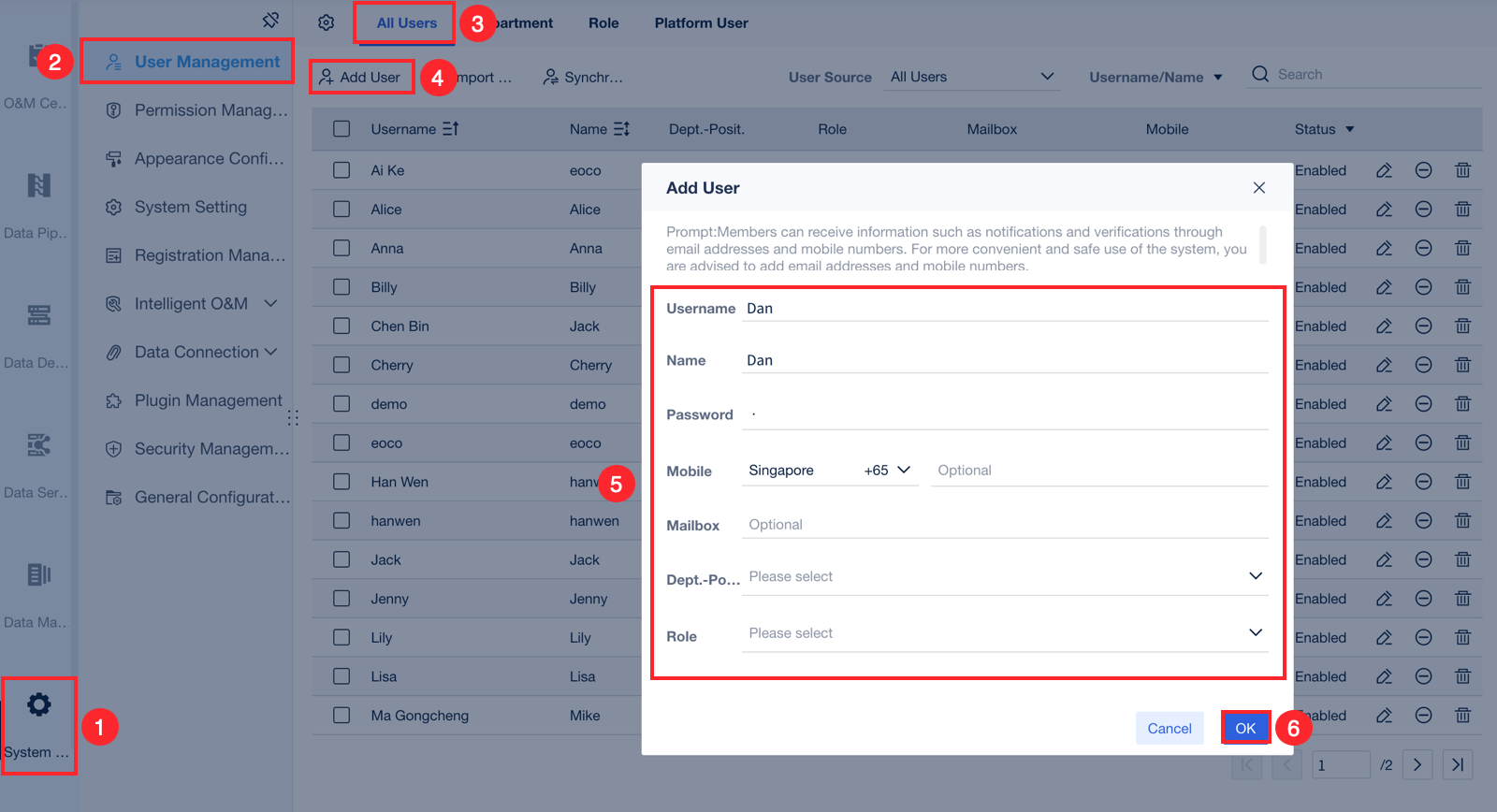
You gain lasting advantages when you adopt an enterprise data strategy. You improve decision-making with data insights and boost operational efficiency by analyzing information from many channels. You strengthen data governance and maintain compliance. You also increase customer engagement through tailored experiences. A strong strategy helps you reduce risks, foster a data-driven culture, and support collaboration. FineDataLink makes it easier for you to manage and integrate data, helping your organization grow and adapt.
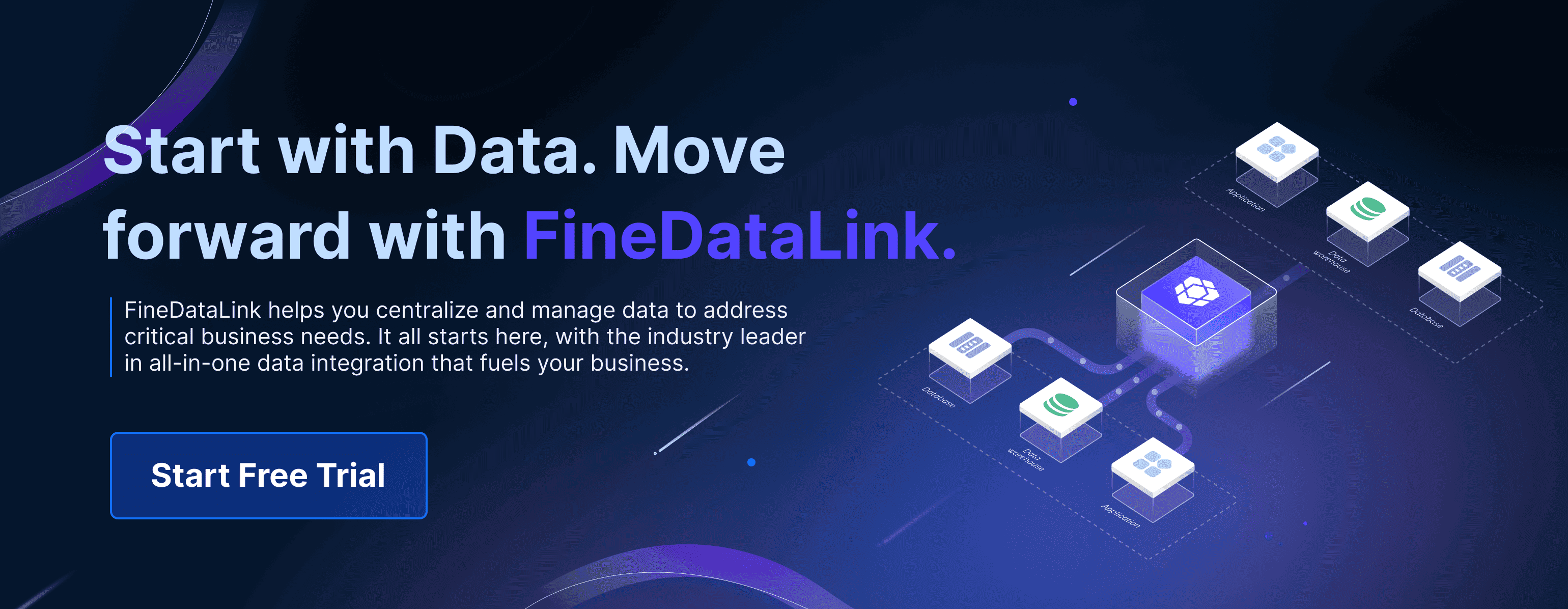
Continue Reading About Enterprise Data Strategy
Enterprise Data Integration: A Comprehensive Guide
What is enterprise data and why does it matter for organizations
Understanding Enterprise Data Centers in 2025
Enterprise Data Analytics Explained for Modern Businesses
FAQ

The Author
Howard
Data Management Engineer & Data Research Expert at FanRuan
Related Articles

12 Best Data Observability Tools to Watch in 2025
Top 12 best data observability tools for 2025 with key features to boost data quality, reliability, and integration for modern data-driven teams.
Howard
Nov 28, 2025

Top 10 Data Quality Monitoring Tools You Should Know in 2025
Compare the top 10 data quality monitoring tools for 2025 to find solutions with advanced features, real-time monitoring, and seamless integration.
Howard
Nov 27, 2025

Top 10 Vendors Leading Modern Data Platforms in 2025
See the top 10 vendors shaping modern data platform solutions in 2025, with insights on innovation, scalability, integration, and enterprise adoption.
Lewis
Nov 27, 2025



